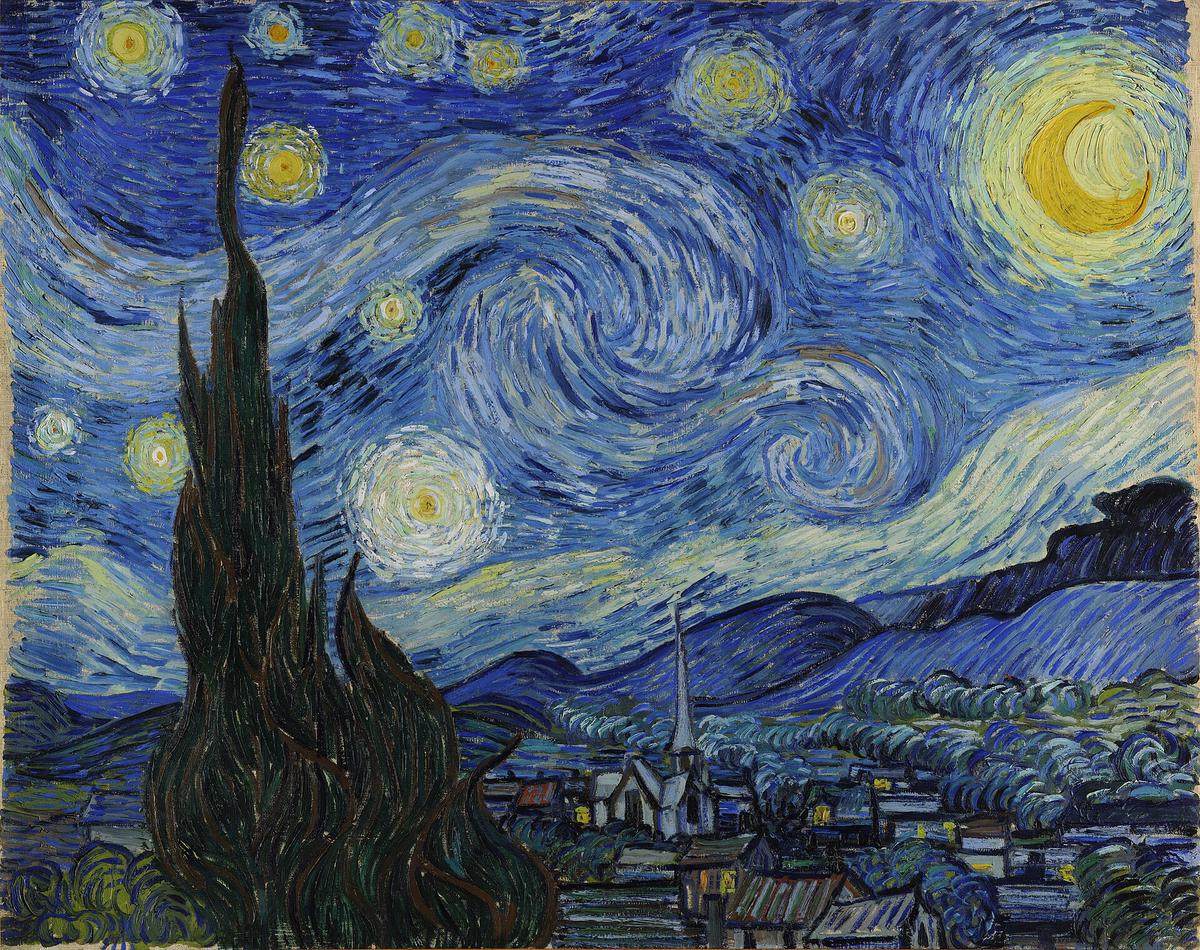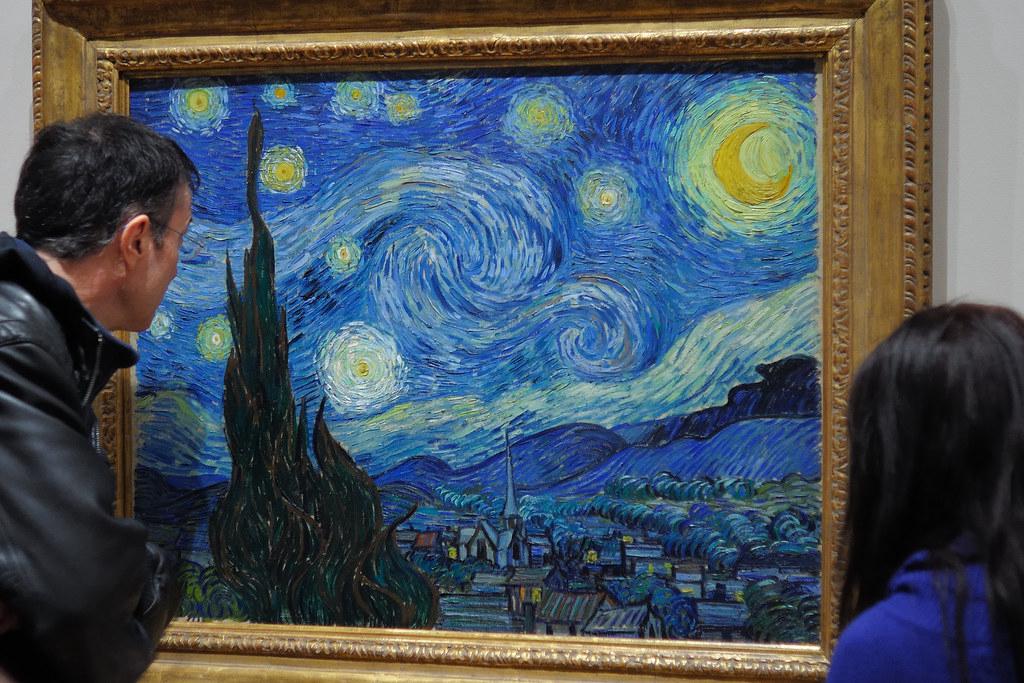In Saint-Rémy-de-Provence, Vincent van Gogh found both solace and confinement at the Saint-Paul-de-Mausole asylum. This period gave birth to "The Starry Night," a painting that captures Van Gogh's emotional depth and artistic vision.
Saint-Rémy-de-Provence Asylum
In a quiet corner of southern France lies the Saint-Paul-de-Mausole asylum where Vincent van Gogh created "The Starry Night." His stay here was both a retreat and a prison, driven by a need to find peace from his turbulent mind.
Van Gogh arrived in May 1889, seeking reprieve from severe depression and bouts of psychosis. The lush, rolling landscapes of Saint-Rémy, with their cypress trees and wheat fields, provided a beautiful contrast to the chaos in his mind.
His room offered a window to the world outside, framing a view that would inspire "The Starry Night." This small cell was both his sanctuary and studio. Observing the night sky, Van Gogh saw more than just stars and moon; he saw a vast, swirling celestial expanse that echoed his inner turmoil.
The tranquility of the Provençal countryside, combined with the routine of asylum life, offered a peculiar calm. Van Gogh's daily walks gathered visual impressions that he would pour into his canvases. The natural light of Provence influenced his palette, with vivid blues and yellows speaking to the clarity and intensity of the local light.
In this rural asylum, Van Gogh found a strange harmony. His connection to nature allowed him to channel his emotions into his work with raw intensity. The Saint-Paul-de-Mausole asylum may have been a place of confinement, but for Van Gogh, it was where his creativity soared, making "The Starry Night" not just a vision of the heavens, but a mirror of his soul.
View from the Window
The view from Van Gogh's window at the asylum presented a panorama that he transformed into the mystical landscape of "The Starry Night."
Rolling hills punctuated by cypress trees stretched before him, their dark silhouettes cutting through open skies. Mountains on the horizon provided a steady backdrop, evoking both stability and yearning. Closer to the asylum, orderly groves of olive trees shimmered in daylight but darkened mysteriously at night.
During the day, the view basked in the vivid light of Provence, inspiring the vibrant blues and yellows in "The Starry Night." The cypress trees, appearing almost flame-like against the starry backdrop, reach upwards as if yearning to touch the celestial wonders above.
At night, the view transformed. The serene village below, with its clustered rooftops and church steeple, became a quiet participant in the drama of the night sky. The steeple, elongated and prominent, subtly intertwined Van Gogh's Dutch heritage with his present surroundings.
The heavens above, brimming with stars that seemed to twist and whirl, were not just points of light but dynamic entities. These swirling celestial bodies mirror the turbulence within him. The moon and Venus added focal points that anchored the night sky, creating balance within the chaos.
This profound connection to his environment allowed Van Gogh to infuse "The Starry Night" with a depth of feeling that transcends mere observation. The painting is a testament to how the visible world influenced his artistic imagination, transforming the observable landscape into a celestial reflection of his innermost thoughts and emotions.
Artistic Imagination and Alterations
"The Starry Night" exhibits a dance between reality and imagination, crafted by an artist who saw beyond mere replication of the observable world.
Van Gogh embraced artistic liberties that allowed him to transcend the physical limitations of his view. The village depicted, with its quaint houses and iconic steeple, is a blend of his memories of Dutch architecture with Provençal landscapes.
The swirling night sky, a celestial ballet of stars and moon, defies the static nature of the universe. The stars, almost hypnotic in their spiraling motion, cater to a romanticized vision of the night. This portrayal of the sky as a living entity reflects Van Gogh's emotional state, imbuing the painting with a sense of endless flow and turbulence.
Key elements of Van Gogh's artistic alterations include:
- The crescent moon: Exaggerated luminosity and placement, becoming both an anchor and a focal point
- Venus: Rendered as a radiant presence surrounded by concentric circles of brilliance
- The Milky Way: Depicted with thick, swirling patterns that seem almost tactile
- Cypress trees: Soaring against the cosmic backdrop, acting as visual bridges connecting the earthly to the heavenly
Through his use of artistic imagination, Van Gogh creates a night sky that does more than just exist—it speaks, it sings, and it tells the story of its creator's perceptive soul. By marrying observation with imagination, he immortalized not just the view from his window, but the boundless expanses of his mind.
Cultural and Astronomical Influences
The cultural and astronomical influences on Vincent van Gogh's "The Starry Night" are deeply intertwined. Van Gogh's admiration for Japanese art, particularly Katsushika Hokusai's "The Great Wave," played a significant role in shaping his artistic vision. The dynamic, almost explosive movements of "The Starry Night's" celestial elements mirror the energy of Hokusai's waves.
Van Gogh's fascination with the cosmos wasn't limited to artistic influences; he was also captivated by contemporary astronomical observations. His placement of Venus in the composition reflects an awareness of astronomical phenomena. The late 19th century saw growing interest in the stars, spurred by scientific advancements. Van Gogh integrated these discoveries with his own emotional and psychological insights.
The painting also reflects the spirit of the Romantic era, which held nature and the sublime in high regard. Van Gogh's depiction of the night sky transcends mere landscape painting, becoming a conduit for expressing the awe the universe inspired in him.
"The Starry Night" becomes a dance between the observed and the felt, making the stars not just lights in the sky, but storytellers of infinite stories.
Despite these influences, what sets "The Starry Night" apart is Van Gogh's unique ability to amalgamate them into a cohesive and personal vision. He wasn't just painting what he saw or knew; he was painting what he felt—a synthesis of reality's constraints and his imagination. His night sky is a blend of external influence and inner turmoil, bridging the gap between the known and the unknown, the literal and the symbolic.
In this blending of cultural artistry and astronomical insight, Van Gogh crafted a visual symphony that speaks to the timeless human fascination with the cosmos and our place within it.

Exhibitions and Movement of the Painting
"The Starry Night" has traveled a winding path through galleries and collections since its creation. It made its public debut in posthumous exhibitions in Brussels and Paris in 1890 and 1891. While not an instant sensation, it gradually gained recognition and became one of the most cherished paintings in modern history.
Key Exhibition Milestones:
- Early 1920s: Displayed in Georgette van Stolk's home in Rotterdam
- 1941: Acquired by the Museum of Modern Art (MoMA) in New York
- 2023: Temporarily moved to the Metropolitan Museum of Art for the "Van Gogh's Cypresses" exhibit
In the early 1920s, the painting was displayed in Georgette van Stolk's home in Rotterdam. She initially placed it in a conservatory but later wisely protected it with a curtain on sunny days. This household setting marked a growing appreciation for Van Gogh's work beyond art institutions.
A pivotal moment came in 1941 when the Museum of Modern Art (MoMA) in New York acquired the painting through an exchange. It quickly became one of the museum's most famous attractions, drawing crowds who marveled at its vivid colors and emotive power.
In 2023, "The Starry Night" temporarily moved to the Metropolitan Museum of Art for the "Van Gogh's Cypresses" exhibit. This unique show allowed visitors to see the painting alongside its daytime counterpart, "Wheat Field with Cypresses," for the first time since 1901.1
The painting's journey reflects its enduring appeal. Whether displayed at MoMA, The Met, or in traveling exhibitions, "The Starry Night" continues to captivate audiences worldwide. Each new venue offers the painting a fresh audience, expanding the legacy of an artist who once struggled for recognition.
Today, "The Starry Night" remains a luminous beacon in the ongoing dialogue between art and its admirers, its vibrant journey across galleries and museums a testament to its compelling beauty and timeless intrigue.

"The Starry Night" stands as a testament to Van Gogh's ability to transform his surroundings into a vivid reflection of his psyche. The painting's journey from obscurity to acclaim mirrors its creator's own struggle for recognition, making it an enduring symbol of artistic perseverance and emotional resonance.
























